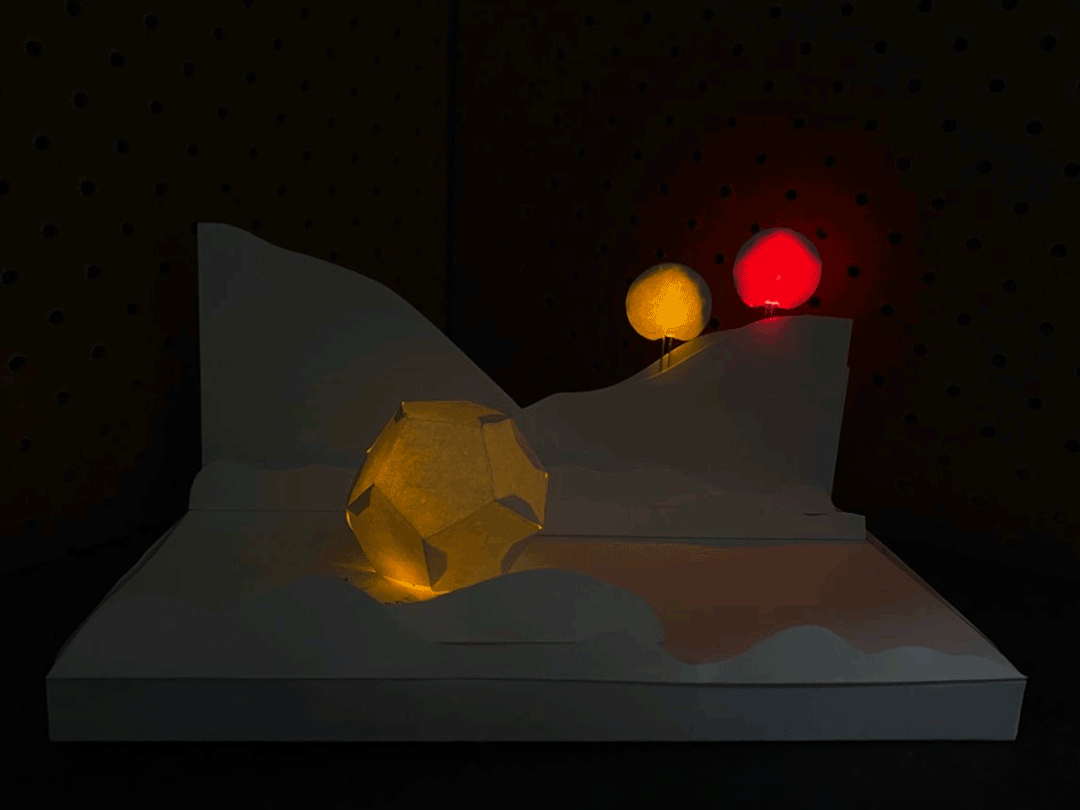4. PLAY
PHYSICAL COMPUTING
Starting off with the basic necessary items, we were introduced to the copper tape, a coin battery, different LED-coloured lights, bulldog clips, and masking tape. After referencing a landscape image from Star Wars, we started planning how we wanted the cutout to look like. We planned the layout and the positioning without sticking down first to make sure it works. Through trial and error of the different pasting methods, we had to try out the actual circuit and realised we had to use a bulldog clip to secure the battery to the copper tape that was on the paper. We took a while and struggled a little but managed to get it. Through observing the landscape image, we played with the different variations of how the hills could look like.
During the process, we tried different ways of dispelling the lights. We noticed that the white LED light direction did not disperse as much as the others, so I tried sanding down the plastic shell’s surface. Sanding it down would allow the light to be evenly-distributed. Though it did work, we did not proceed with white as the connection to the circuit had some issues if we wanted to use white and another colour.
Throughout the process, I felt quite proud of the effort my friends and I have put into this as we felt that the entire process was fun. We used the existing knowledge from Dhiya’s class and applied it to this assignment through using Blender for the paper model. This allowed us to achieve the hexagon sphere.




























